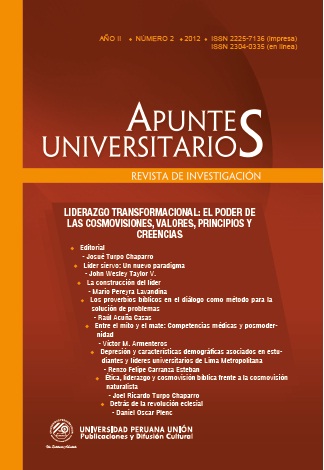Servant Leader: A New Paradigm
DOI:
https://doi.org/10.17162/au.v0i2.300Keywords:
Leadership, servant leader, decision-makingAbstract
Leadership that one adopts is based on their Worldviews and in his outlook on life.
The worldview of the Samaritan told by Christ (Luke 10:30-36) and it leads to a
paradigm shift in the life of a leader.In a situation “what can I win” to other “what
can I give”. In this article discusses the prospects and biblical proportions Servant
Leader, and taking Christ as the perfect model of a servant Leader.
Downloads
References
Brunt, J. (1979). Decisions: How to use biblical guidelines when making decisions. Nashville: Southern Publishing.
Lambert, L. (2002). A framework for shared leadership. Educational Leadership, mayo, 2002.
Sutton, R. (2010). Sharing leadership to maximize talent. Paragon Strategies.
Online: http://paragonstrategies
White, E. (2000). El deseado de todas las gentes. Miami: Publicaciones Interamericanas. Winn, R. (s/f). Seminario de relaciones humanas
Downloads
Published
Issue
Section
License
- The authors retain their copyright but assign to the journal the right of the first publication, with the work registered under the Creative Commons attribution license, which allows third parties to use the published information as long as they mention the authorship of the work and that it was first published in this journal.
- Authors may make other independent or additional contractual arrangements for non-exclusive distribution of the version of the article published in this journal (eg, include it in an institutional repository or publish it in a book) as long as it clearly indicates that the work was first published in this journal.
- Authors are encouraged and advised to publish their work on the Internet (for example, on institutional or personal pages) before and during the review and publication process, as it can lead to productive exchanges and a greater and faster dissemination of the published work (see The Effect of Open Access).





